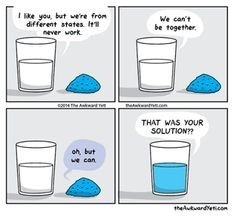Physics and Chemistry cannot be separated
 At a laboratory, there are two solutions inside beakers:
of an aqueous solution of sodium hydroxide
mole/L and
of an aqueous solution of hydrochloric acid
mole/L. These two solutions are mixed inside another beaker and the resulting solution is heated to
. What is the approximate concentration, in moles/L, of
sodium ions
on this resulting solution after the heating?
At a laboratory, there are two solutions inside beakers:
of an aqueous solution of sodium hydroxide
mole/L and
of an aqueous solution of hydrochloric acid
mole/L. These two solutions are mixed inside another beaker and the resulting solution is heated to
. What is the approximate concentration, in moles/L, of
sodium ions
on this resulting solution after the heating?
Details and Assumptions:
- Use the initial values to calculate things related to spilled liquid (if there is), as concentrations and number of moles.
- The laboratory's room temperature is 25°C and the system was, initially , in complete thermal equilibrium.
- Do not consider any heat release due to breakage of chemical bonds.
- The beakers' volumetric thermal expansion coefficient is and the resulting solution's volumetric thermal expansion coefficient is .
- Do not consider the middle stages of the heating process. Use in your calculations the values related to the moment after the heating.
- The resulting solution is unsaturated and its solutes are distributed homogeneously in the beaker's space.
- Do not consider any water production due to any chemical reaction.
- The beaker that contains the resulting solution is, at the end of all processes, completely full.
- Do not consider any volume contraction due to hydrogen bonds that might be formed.
This section requires Javascript.
You are seeing this because something didn't load right. We suggest you, (a) try
refreshing the page, (b) enabling javascript if it is disabled on your browser and,
finally, (c)
loading the
non-javascript version of this page
. We're sorry about the hassle.
0 solutions
No explanations have been posted yet. Check back later!